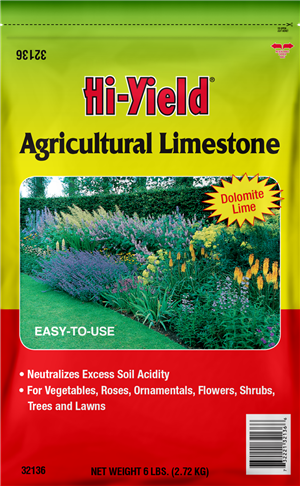Is your soil acidic? Although this might sound bad, in some cases, it is actually what is best for your plant. Whether you are just a beginner, a seasoned professional, or farming for fun, understanding your soil’s pH is crucial to growing a healthy lawn or garden.

If you find that your soil’s pH is on the lower side, no worries! Depending on the plant you are growing, a slightly lower pH might be a good thing. According to Dr. Han, associate professor and extension specialist (turf) Crop, Soil, and Environmental Sciences faculty at Auburn University, “A lot of plants actually benefit from acidic soil. Most plants are going to grow better at a slightly acidic pH (somewhere in the range of 6-7).” One of the main regions that you will find acidic soil is the southeast because of the location’s humidity. If the plant you are growing thrives better in alkaline conditions, however, there is an easy fix!
Lower pH
Low pH is defined as any value on the pH scale (numbered 0-14) that is less than a neutral 7.0, making it acidic. Understanding your soil’s pH is important because it is what affects the amounts of nutrients that are soluble in water, and therefore, the amount of nutrients available for your plant. As Dr. Han explained it, “The way [plants] pick up most of the nutrients they need is from water. If the nutrients aren’t dissolving in the water in the soil, the plants can’t get the nutrients.” Essentially, pH is what dictates the source of nutrients available in your soil. This is why it’s important to maintain a balanced pH of between 6-7.5 for most lawns and gardens. Some nutrients, like iron, are more soluble in acidic soil, and therefore more available under those conditions, while other nutrients, like potassium and sulfur, are more soluble in alkaline soils, and therefore more available under those conditions.
So, which plants thrive under acidic conditions exactly? Well, there are actually many different plants that love acid; such as, radishes, blueberries, azaleas, magnolias, and marigolds. To see a full list of 43 acid-loving plants, visit this site. In addition to this, some flowers, like hydrangeas, change color depending on soil pH!

Higher pH
Although this may sound great, Dr. Han explained that if the pH becomes too acidic, the plant will not thrive. He said, “No plant can thrive if [its soil] gets too acidic. This is why a soil test is so important.” For lawns and grasses, a pH of about 5.5 or lower, is where you reach trouble. A soil test can tell you exactly what your soil’s pH is, and recommend remedies for a pH that is harmful for your plant.

Let’s say you get your results back and your pH is too low for your plant’s liking, well in this case, you might need to adjust it. A common way to raise your soil’s pH is to add limestone. Dr. Han said, “When the pH gets down to below about 5.6, that’s usually when soil testing labs will give you a recommendation to add limestone to the soil.” The reason for this is that limestone is a great source of calcium carbonate; which, funny enough, is the active ingredient in Tums. The calcium carbonate in limestone works by directly neutralizing the acid in your soil. Snail shells, oyster shells, and as strange as it sounds, pearls are all great sources of calcium carbonate too.
Acidic soil has its benefits and drawbacks, but ultimately, the best way to understand your soil’s pH and resolve any issues that might inhibit your plant from thriving, is by investing in a soil test.







4 Comments